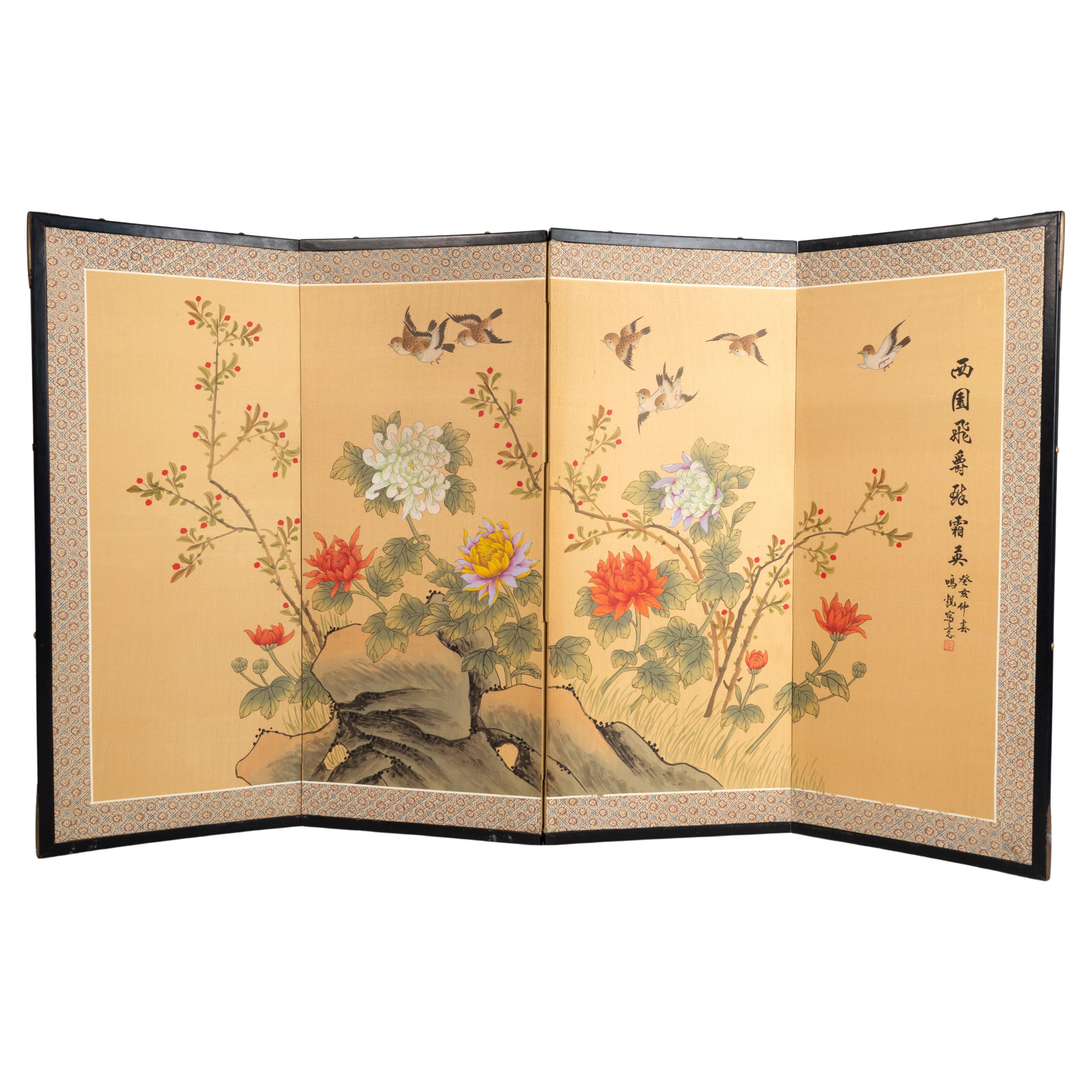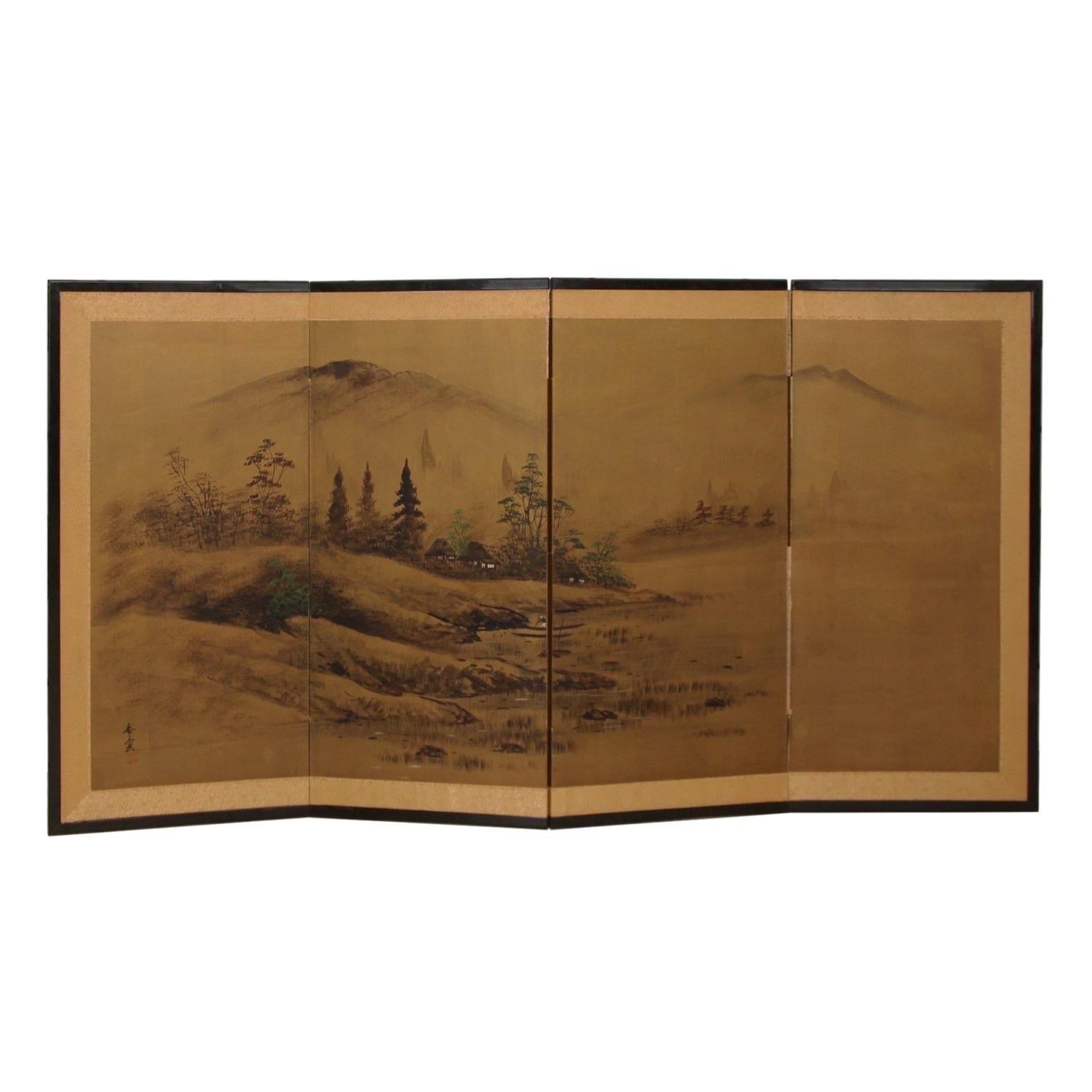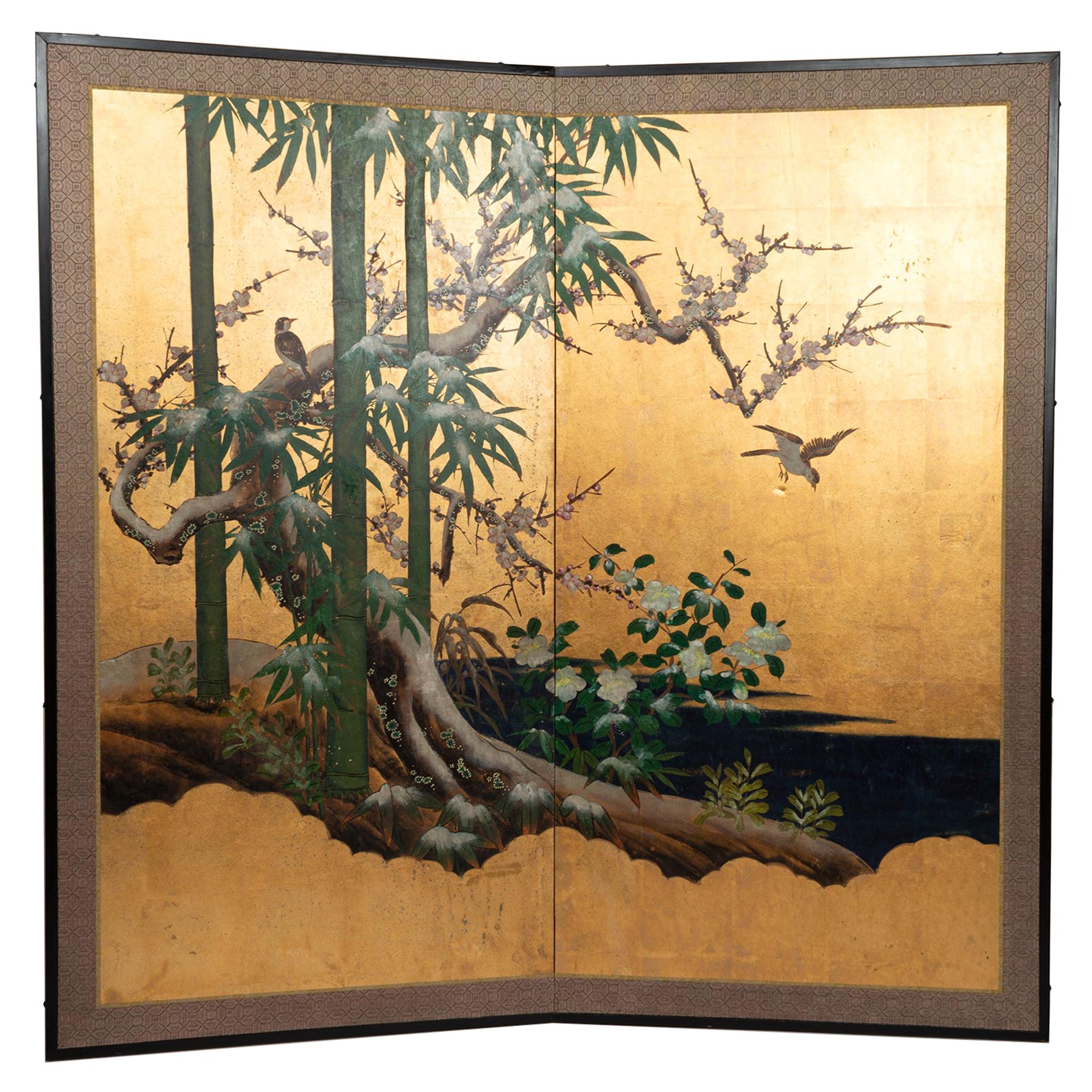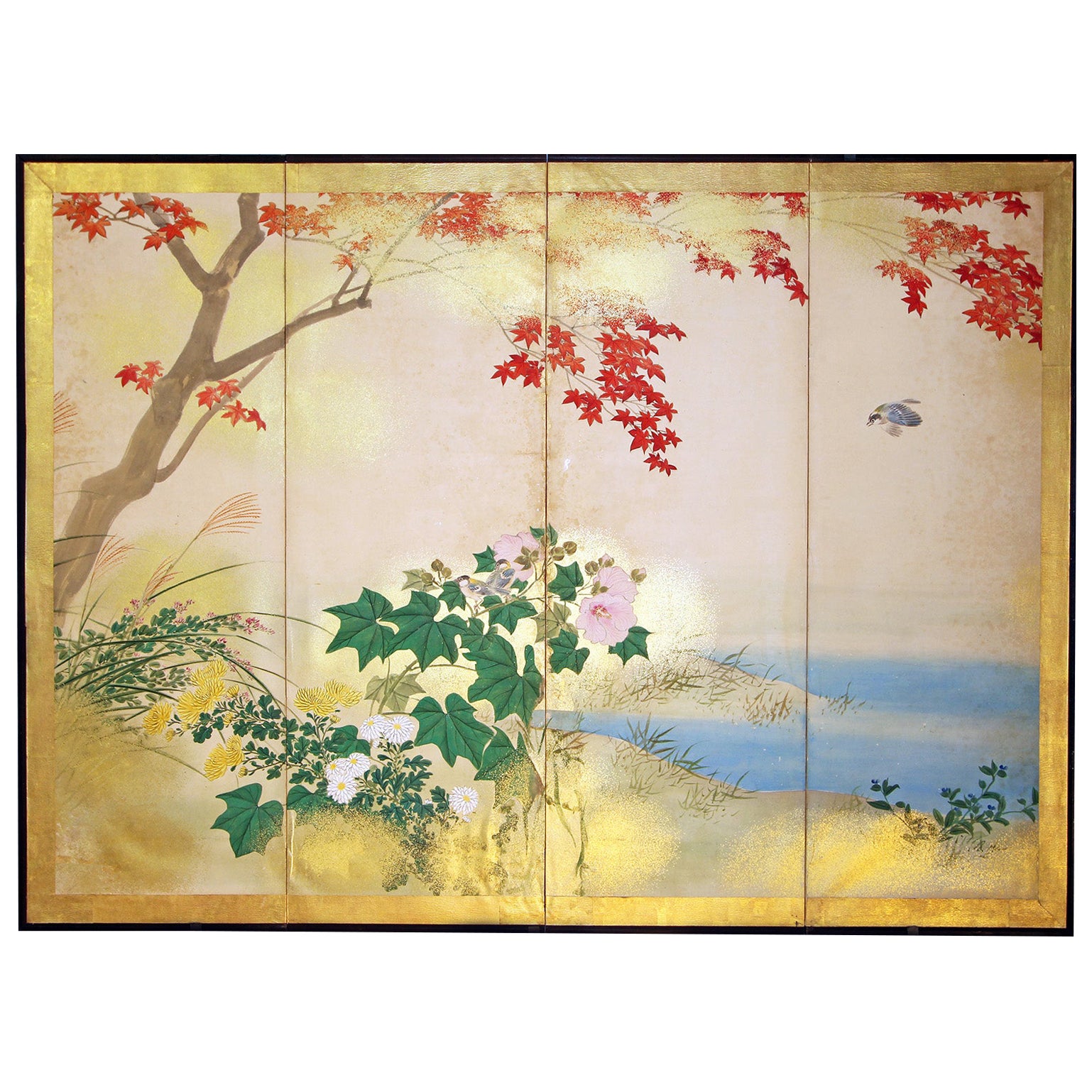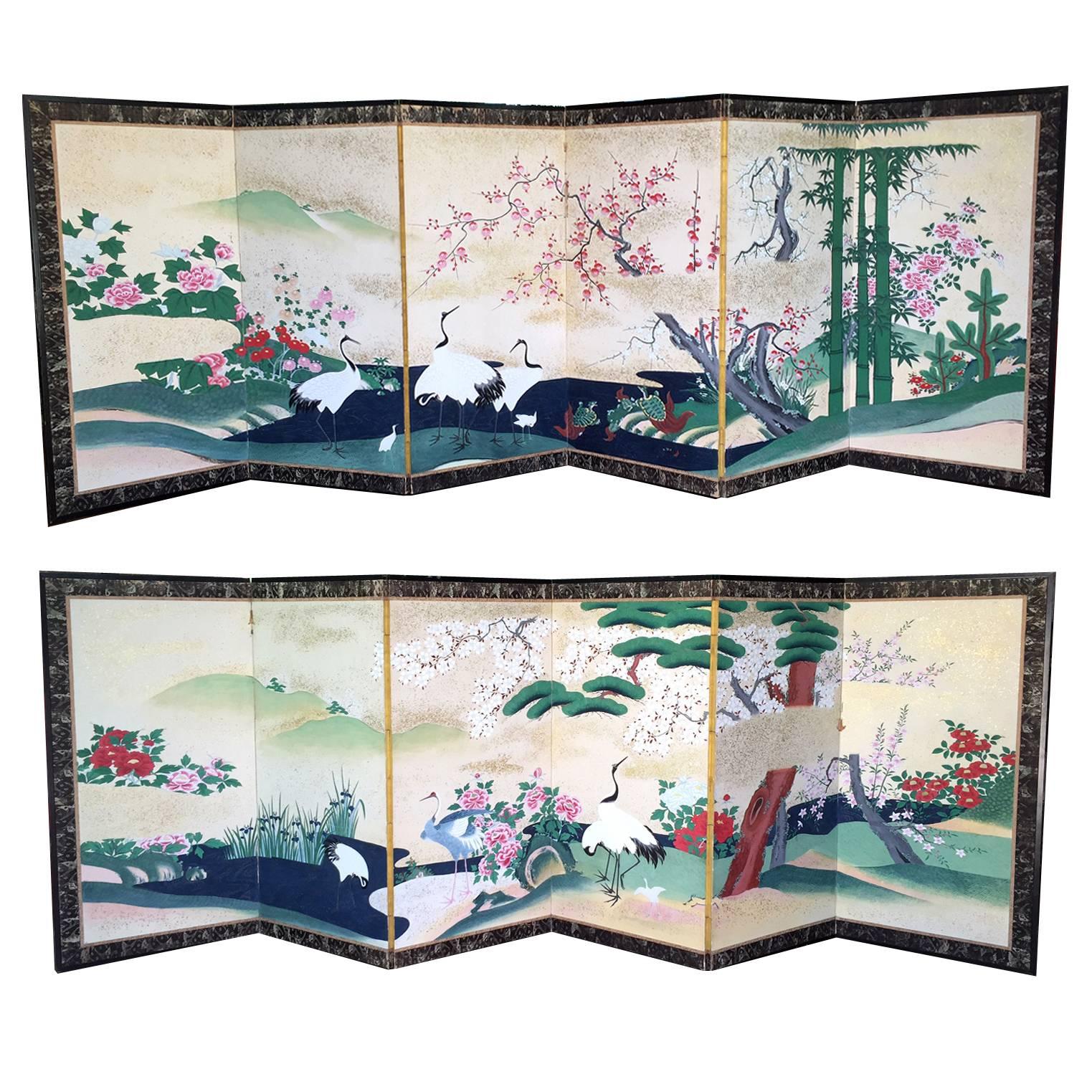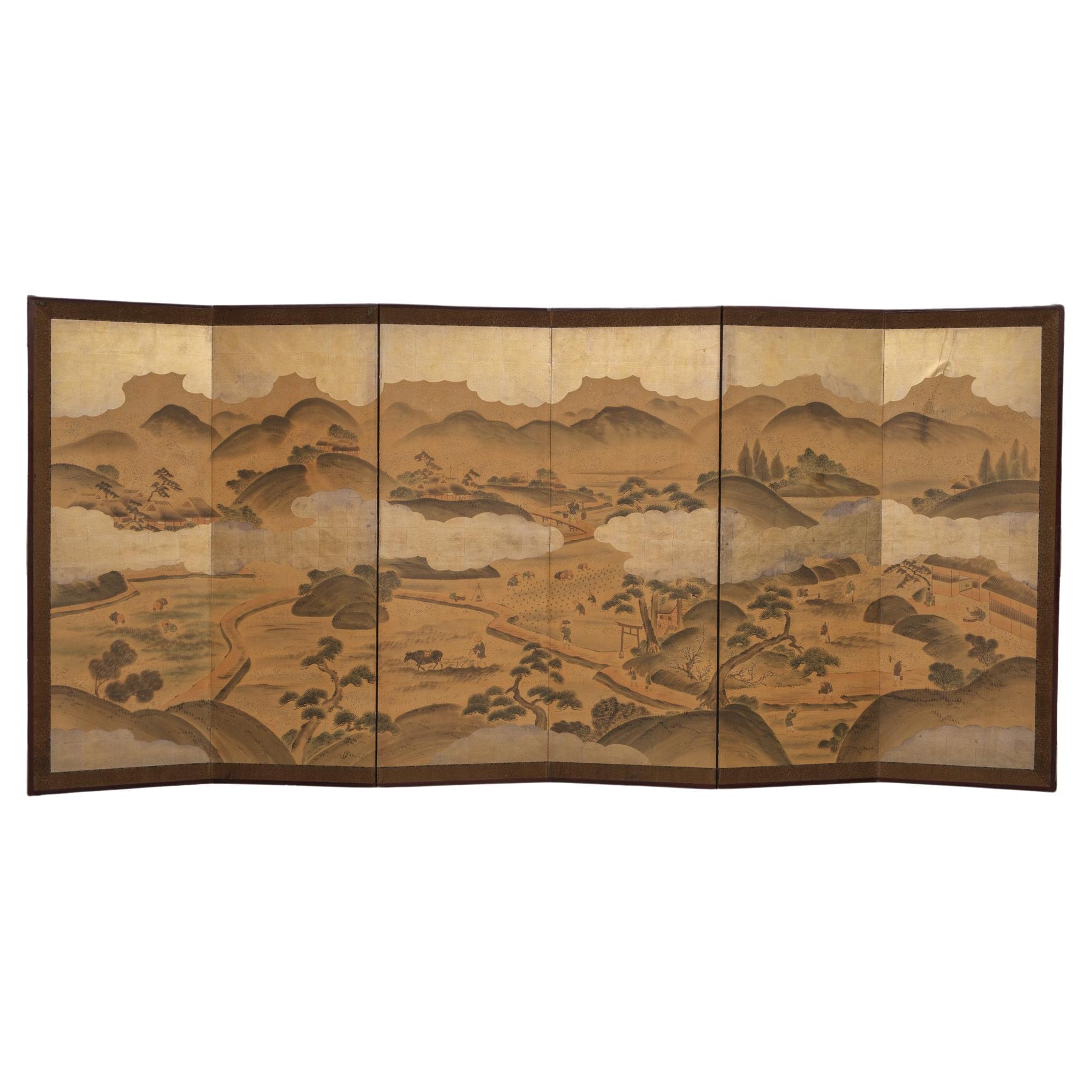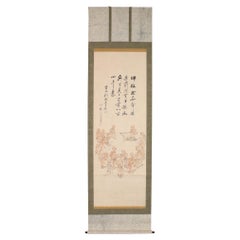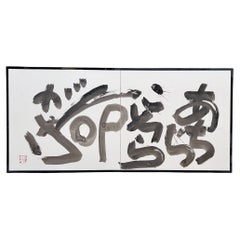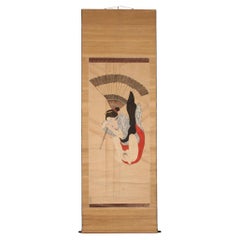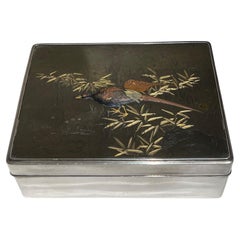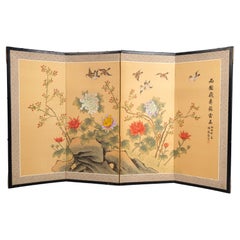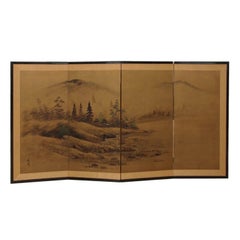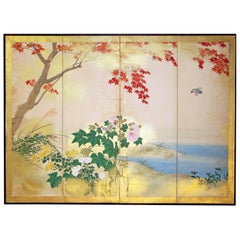Items Similar to Two-panel folding screen, Nihonga, Hirai Baisen (1889–1969), early Shōwa era (19
Video Loading
Want more images or videos?
Request additional images or videos from the seller
1 of 16
Two-panel folding screen, Nihonga, Hirai Baisen (1889–1969), early Shōwa era (19
$6,709.60
£4,994.86
€5,600
CA$9,190.48
A$10,221.82
CHF 5,337.52
MX$124,388.68
NOK 68,168.24
SEK 63,929.78
DKK 42,630.84
Shipping
Retrieving quote...The 1stDibs Promise:
Authenticity Guarantee,
Money-Back Guarantee,
24-Hour Cancellation
About the Item
Two-panel folding screen, Nihonga, Hirai Baisen (1889–1969), early Shōwa era (1940s)
This two-panel screen is signed by Hirai Baisen (1889–1969), a major Nihonga painter who is only now being rediscovered after decades of neglect. Born in Kyoto, Baisen chose not to apprentice under any established master, opting instead to develop his own artistic path. A decisive moment in his career was a trip to China in 1913, which profoundly influenced his work. From then on, he frequently painted landscapes inspired by the Chinese continent, integrating bold perspectives and expressive, wet brushwork. His style is often compared to that of Maeda Seison (1885–1977), and by the 1920s, their works were considered representative of new trends in Nihonga painting.
Between 1907 and 1931, Baisen’s works were regularly selected for the Bunten, the official state-sponsored exhibition in Japan. However, despite a promising start, his career gradually faded as he became a victim of the increasingly conservative tendencies within the Nihonga establishment. Only recently, with the renewed interest in art from the Taishō and early Shōwa periods, has his work regained recognition — notably through institutions such as the Portland Museum, the Honolulu Museum of Art, the Seattle Art Museum, the Metropolitan Museum of Art in New York, the Kyoto Municipal Museum of Art, and several private collections.
This folding screen reflects the evolution of Baisen’s landscape painting: the fluidity of the washes and the layering of mineral pigments convey a poetic vision of the natural world. The scene shows a winding stream flowing through a forest bathed in soft light, where maple trees in golden and pink hues evoke a near-spring atmosphere despite the autumnal setting. The attention to air and light exemplifies the Nihonga artists’ ambition to renew Japanese painting in response to Western standards, while remaining rooted in Asian traditions.
A rare example of Baisen’s later work, this screen reveals both the unique sensitivity of his brush and his key role in the development of Nihonga in the 20th century.
Mineral pigments and gofun on paper, mounted on a wooden structure with lacquered framing strips.
Minor restoration on the side of the right panel, small dents on the back of the frame.
Height: 140 cm. Total width: 154 cm (each panel: 77 cm).
- Dimensions:Height: 55.12 in (140 cm)Width: 60.63 in (154 cm)Depth: 0.79 in (2 cm)
- Materials and Techniques:
- Place of Origin:
- Period:
- Date of Manufacture:1940
- Condition:Wear consistent with age and use.
- Seller Location:PARIS, FR
- Reference Number:1stDibs: LU6491244162052
About the Seller
5.0
Recognized Seller
These prestigious sellers are industry leaders and represent the highest echelon for item quality and design.
Established in 1982
1stDibs seller since 2022
6 sales on 1stDibs
- ShippingRetrieving quote...Shipping from: PARIS, France
- Return Policy
Authenticity Guarantee
In the unlikely event there’s an issue with an item’s authenticity, contact us within 1 year for a full refund. DetailsMoney-Back Guarantee
If your item is not as described, is damaged in transit, or does not arrive, contact us within 7 days for a full refund. Details24-Hour Cancellation
You have a 24-hour grace period in which to reconsider your purchase, with no questions asked.Vetted Professional Sellers
Our world-class sellers must adhere to strict standards for service and quality, maintaining the integrity of our listings.Price-Match Guarantee
If you find that a seller listed the same item for a lower price elsewhere, we’ll match it.Trusted Global Delivery
Our best-in-class carrier network provides specialized shipping options worldwide, including custom delivery.More From This Seller
View AllRare Japanese painting, Skeletons Studying, Shaku Kaiyin, Japan Meiji Period
Located in PARIS, FR
Skeletons Studying, Shaku Kaiyin, Japan Meiji Period
This ink-on-paper painting, mounted as a scroll with colored paper borders, is titled Skeletons Studying. It portrays a circle of...
Category
Antique Late 19th Century Japanese Paintings and Screens
Materials
Paper
$1,821 Sale Price
20% Off
Screen Calligraphy, Risking One’s Life Here and There – Sakae Umezu (1926-2013)
Located in PARIS, FR
Screen Calligraphy, Risking One’s Life Here and There – Sakae Umezu (1926-2013)
This two-panel folding screen, created by Sakae Umezu, is a powerful and expressive calligraphic work....
Category
Late 20th Century Japanese Screens and Room Dividers
Materials
Paper
Scroll paintingJapan, Woman jumping from the balcony of Kiyomizu-dera Edo period
Located in PARIS, FR
Japan, Woman jumping from the balcony of Kiyomizu-dera Edo period
Japanese scroll painting – Woman jumping from the balcony of Kiyomizu-dera temple, Edo period
Ink and pigments on pa...
Category
Antique 1790s Japanese Paintings
Materials
Paper
Box signed Katsutoshi Koku, Japan, Meiji period (1868-1912)
Located in PARIS, FR
Box signed Katsutoshi Koku, Japan, Meiji period (1868-1912)
Rectangular silver box bearing the Japanese junjin hallmark, signifying pure silver, made during the Meiji period (1868-1...
Category
Antique Late 19th Century Japanese Decorative Boxes
Materials
Silver
Spectacular Nishinjin silk and metal threads Obi, Japan, circa 1960-70
Located in PARIS, FR
A very special high quality Nishijin, traditionaly wowen Japanese belt.
It can be used as a runner or as a wall decoration.
The wowen silk is more than 4 meters long!
the back is li...
Category
Vintage 1960s Japanese Pillows and Throws
Materials
Silk
$349 Sale Price
20% Off
Japan, Pair of Hokai boxes in lacquered wood, Edo period, 1829
Located in PARIS, FR
Japan, Pair of Hokai boxes in lacquered wood, Edo period, 1829
Japan, Rare Pair of Hokai boxes in lacquered wood, Edo period, dated Bunsei 12, 1829.
Hokai boxes are traditionally use...
Category
Antique 19th Century Japanese Chinoiserie Decorative Boxes
Materials
Lacquer
You May Also Like
Japanese Four-Panel Folding Screen Byobu Signed Showa Period C.1950
Located in London, GB
A four-panel Japanese Byobu folding screen depicting a floral scene with birds.
Japan, C.1950 Showa Period
An attractive example, beautifully h...
Category
Mid-20th Century Japanese Showa Paintings and Screens
Materials
Silk, Paper
Antique Japanese Taisho Period Byobu Four Panel Folding Screen
Located in New York, NY
Antique Byobu Four Panel Screen.
Japan, late 19th to early 20th century. Taisho period.
Category
Antique Late 19th Century Japanese Paintings and Screens
Materials
Paper
Antique 19th Century Japanese Two-Panel Screen ‘Byobu’, Kano School, Edo Period
Located in London, GB
Japanese Kano School Edo period two-panel screen depicting flowering prunus and bamboo on a rock formation, with colorful birds next to a body of water. ...
Category
Antique Mid-19th Century Japanese Edo Paintings and Screens
Materials
Gold Leaf
Byobu - Japanese Folding Screen
By Japanese Studio
Located in Brescia, IT
Nice four-panel Japanese screen painted on vegetal paper, depicting a landscape with a red maple, flowers and birds.
The size is very refined and easy to place in a design project.
Category
Mid-20th Century Japanese Showa Paintings and Screens
Materials
Paper
Pair of Rare Antique Japanese Folding Screens with Provenance
Located in Atlanta, GA
An amazing pair of matching antique Japanese folding screen predating 1812-1813, most likely from Kano School. Six panels each depict C...
Category
Antique 1810s Japanese Japonisme Paintings and Screens
Materials
Brass
Large Japanese 6-panel byôbu 屏風 (folding screen) with genre painting
Located in Amsterdam, NL
Fascinating large six-panel byôbu (folding screen) with a detailed genre painting on goldish silver leaf with different scenes of people at work in a rural mountain village during th...
Category
Early 20th Century Japanese Paintings and Screens
Materials
Silver Leaf
More Ways To Browse
20th Century Folding Screen
Wooden Screen Panels
Lacquered Folding Screen
Chinese Fold Screen
Chinese Folding Screen
Small Asian Screens
Japanese Screen Tree
Japanese Screen Kyoto
Japanese Showa Screen
Seattle Vintage Furniture
Wooden Folding Screen
Chinese Paint Brushes
Kyoto Screens
Painted Paper Panels Chinese
Japanese Brush Painting
Two Panel Folding Screen
Rare Chinese Screens
Small Folding Screen
